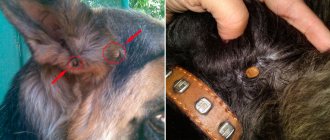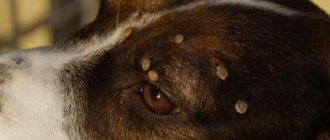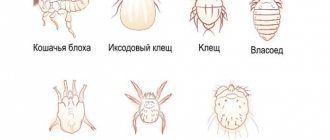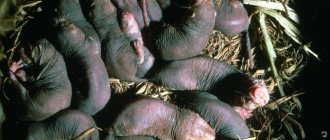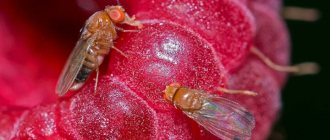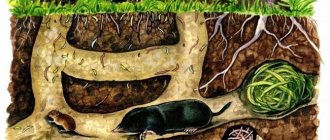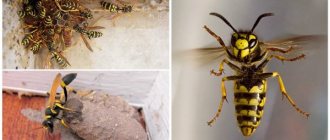Larval therapy - what is it?
Research conducted by scientists has proven that the use of maggots of a certain type, worms in cleansing wound surfaces is a progressive treatment method. The time spent on cleaning is up to 5-6 days, but the use of traditional methods allows you to achieve a similar result only on the 90th day. Doctors recommend the widespread use of the technique, for example, in the treatment of methicillin-resistant staphylococcus.
Treatment with maggots is a fairly forgotten old remedy. It was used both in ancient times and during the Second World War, but the advent of antibiotics led to a decrease in the popularity of therapy. Today, the technique is in demand among adherents of alternative therapy in our country, as well as as an adjuvant in European clinics.
The essence of the technique is that maggots eat only dead tissue and do not touch healthy areas. This is what attracted the attention of specialists. The opinion of professionals is clear: the use of sterile larvae and maggots of flies can significantly speed up the cleaning process, and therefore the healing of wounds. In addition, there are no problems with drug compatibility, and the risk of wound infection by antibiotic-resistant bacteria is reduced.
How to protect yourself from gadfly larvae?
Finally, we will discuss the most important thing - ways to protect yourself from these parasites. At the same time, we note that there are quite a lot of them. But you should start with prevention, which includes:
- avoiding places where gadflies live in large numbers;
- use of clothing that protects against bites of various insects;
- use of special repellents.
- treating body parts that have been bitten by blood-sucking insects with disinfectants.
It would be a good idea to exclude visiting potentially dangerous countries where you can find many gadflies. These are countries in Africa, South and North America.
Those involved in livestock farming should also take preventive measures. They will prevent the spread of gadflies and significantly reduce the number of cases of livestock infestation with their larvae.
- Regular examination of animals for the presence of fistulas and nodules that are typical when parasites enter the body. Particular attention should be paid to the back, croup and lower back.
- Treatment of the entire livestock with special preparations, the action of which is aimed at destroying the larvae. The most preferable time for this is late summer or early autumn.
- Grazing cattle in the morning (before 10:00) and in the evening (after 18:00), when the activity of the gadflies subsides. During the daytime, it is advisable to keep animals under shelters or indoors.
- Use of special traps for gadflies and repellers on pastures and farms.
What larvae are treated?
Larvae of common flies are used to sterilize and eliminate tissue necrosis. These unattractive worms can work wonders. Maggot larvae, applied to the wound, eat away and eat away the necrosis with such skill that is inaccessible to some surgeons.
However, despite all the positive aspects, not every patient will be able to undergo the course of therapy. Allowing there to be worms in the wound means having fortitude and not suffering from disgust. The method is simple: sterile maggots are applied to a wound with necrosis and pus. The top crust must then harden so that the worms can eat away the dead flesh. After all, the wound is opened, the larvae are removed and you can wait for the healing of the flesh.
The principle of action of maggots on the patient’s body
Scientists have experimentally found that the ability of fly larvae to heal wounds is caused by suppression of the body's immune response. A substance secreted by fly larvae when combined with blood serum causes a decrease in protein levels. In some cases, the concentration is reduced by almost 99%. A detailed study of blood samples showed: mucus components break down complement C3, C4, which leads to suppression of the immune response and faster healing of wounds. Moreover, the healing process is not burdened by purulent inflammation of healthy tissue, swelling, swelling and focal redness are completely absent - characteristic signs of the onset of an infectious process in healthy tissue.
Fact! The mucous substance does not lose its beneficial qualities even when boiled or kept for a month - this property ensures the effectiveness of larval therapy even in the case of particularly advanced gangrenous, purulent processes.
Today, doctors successfully use the antibiotic seraticin, isolated from the mucus of maggots, and used to treat trophic ulcers and bedsores.
Treatment: how to remove maggots from a dog
Maggots on a dog simply need to be treated. How to remove maggots from a dog is a matter of life and death for the pet. On the Internet you can find many folk recipes for getting rid of this scourge, ranging from tar to simple chlorhexidine. However, you should pay attention to the health of your pet from the inside. Remember the last time anthelmintic was carried out. Call a doctor at home? As soon as possible. Maggots in dogs pose a significant danger to the animal.
- Maggots can be removed in several ways, but general preparation of the animal must first be carried out.
- First of all, you need to deworm the animal with appropriate medications, which will be recommended by your veterinarian.
- After deworming, you should thoroughly disinfect the room, or even better, the entire apartment in which the dog lives.
- All traditional methods of treatment should be used only after consultation with a veterinarian.
Maggots, although not contagious to humans, have a fairly good appetite and can eat an entire dog alive. If these maggots were noticed in the tail area, the open wound should be monitored for development of the situation. In the event that there are not many insects, you can try to cope on your own, and after treating the wound with chlorgesidine, begin to destroy the uninvited guests. This is done as follows.
How to remove maggots from a dog if there are not many of them:
Nevertheless, maggots also have benefits; they remove dead areas in the wound. But this is noticeable only when these insects are specially placed in the wound, and the maggots themselves are the brainchild of a scientific laboratory.
Treatment technique
To get the right maggots, the flies are kept in a sterile, enclosed area where they can lay their larvae. The worms are then placed in bags and only then can the “live medicine” be used. The effects of worms on the human body are as follows:
- sterilization of focal wounds;
- stimulation of healing;
- cleansing by eating necrotic areas;
- the secreted substance allantoin stimulates the healing process.
Fact! Allantoin, secreted from the urea of the larvae, is also found in cow urine. That is why in villages they still wash wounds with evaporated cattle urine.
It should be noted that seraticin, an antibiotic contained in the mucus of worms, resists 12 strains of methicillin-resistant Staphylococcus aureus, destroys E. coli and bacteria that cause pseudomembrane colitis.
Larval therapy includes several mandatory stages:
- breeding larvae of a certain type of fly (green fly, blowfly);
- obtaining eggs with their subsequent washing and sterilization;
- hatching larvae;
- placing worms in the wound;
- opening the wound and removing maggots.
Before placing worms into a wound, they are forced to starve, so placing larvae in a wound for more than a day is not recommended. However, sometimes the time of therapeutic effect is calculated individually. It all depends on the severity, size of the affected area, type of wound and the presence of purulent inflammation. For example, if the lesion is chronic, the bed is covered with disinfected larvae for 4 days. The procedure can be repeated several times, achieving complete cleaning of the wound bed and a speedy recovery of the patient.
Interesting! Sometimes silky lucilia larvae are used. These worms secrete an enzyme that dissolves dead tissue and then eat the resulting substance. After 2-4 days, individuals grow to a size of 12 mm and stop cleaning the wound. If necessary, they are replaced with a new portion of maggots and therapy is continued.
Unfortunately, larval therapy in its original form causes more rejection than acceptance in the average patient. Not every person can allow worms to appear in a wound, and doctors prefer more conservative methods of healing. But if the doctor suggests trying this option, you should not refuse - in just 1-2 days the bed of the most advanced wound will be cleared, and the healing process will go much faster. In this case, you will not have to administer loading doses of antibiotics and other anti-inflammatory medications.
Question for experts: how to remove maggots from a dog? There are so many of them and she suffers a lot. The dog is old and lives in a kennel in the yard
Best regards, Valentina Machneva
How to remove parasites?
Removing a gadfly larva is an unpleasant and complicated procedure. It is advisable that it be carried out by a doctor - a surgeon or an ophthalmologist if parasites suddenly get into the eye (which also happens, although rarely).
If for some reason you cannot get medical help, then you should try to remove them from the body yourself as quickly as possible. Moreover, it is best to ask relatives or friends - especially if the parasites are located on the back, head or other hard-to-reach place.
The procedure for removing gadfly larvae itself will be most effective if you follow the action plan below:
- The first step is to take a thick, sticky product. Scotch tape, Vaseline, PVA glue will do. You need to apply it to the nodule. And quite abundantly, because it is important to ensure that oxygen does not enter the resulting fistula. If necessary, you can open the abscess with a scalpel.
- Now we wait. The larva, deprived of air, will partially crawl out. Then you should carefully remove it from the body. It is best to use tweezers or cosmetic tongs. It is important not to crush or tear the parasite. Otherwise, part of it will remain inside, and to remove it you will have to cut the skin deeply.
- As soon as the “baby” gadfly is successfully removed, it is necessary to disinfect the wound. It would be a good idea to bandage it with a sterile cloth.
- After which it is recommended to consult a doctor - a parasitologist or infectious disease specialist - as soon as possible. He will see if you managed to completely remove the parasites from under the skin, and will also prescribe the necessary medications (including antibiotics) and anti-inflammatory ointments.
By the way, in medicine, surgical removal is not always used to combat the larvae of the subcutaneous gadfly. This method is good when the location of the parasites is clearly visible. If they are hidden deep under the skin, then doctors or veterinarians prescribe special ointments and creams that drive the gadfly larvae out. In some cases, drug therapy is also carried out. A special course of medications helps drive out the vile parasites, creating an unfavorable environment for them in the body. But just don’t start treatment with medications without consulting a specialist!
For reference! The gadfly rarely manages to lay a larva in a person. Most often, parasites enter the body of animals.
Best answers
Nadezhda Mikhailova: horror! Why did you bring the dog to this? She's rotting alive!!!
This is me: she has already died, judging by the fact that maggots have appeared - about two weeks ago
Fox: Why are there maggots on her, are there wounds?
Irina Kozyavkina: well, you are sadists. I'll call the police right now
Elena Rusakova (Averina): you need to treat the wound with an antiseptic solution. Wash the maggots thoroughly with water. then put on a bandage with miramistin. In general, you can buy chlorhexidine and wash the wound every day. It is advisable to show the dog to the veterinarian later. or at least give a course of antibiotics, such as gentamicin. it is inexpensive, 2 times a day, 0.3 each. Don’t be afraid, prick in the leg, you will feel the muscle there.
kennel “Bas-ko-chi”: What a nightmare, imagine yourself in his place, here is another example of a dog “for yourself”, or for free, why care for it? Fiends
Marina Frolova: well, firstly, they are simply removed with peroxide or chlorhexidine with a cotton swab, secondly, this is how to run a dog so that maggots will appear, 3rd, cut off all the hair around the affected areas so that it does not get into the wounds . Apply a thin layer of Levomikol ointment, do not lick it off. Do this 2-3 times a day until complete recovery.
DIMON FILIN: she urgently needs to be taken to the veterinarian. Maggots only breed in rotting meat. and the process of rotting is underway. don't torture the dog, take it to the vet. clinic!
OLGA GALUK: how to cure maggots from a dog?
Angelika Byankina: This is to the vet!!! They need to be removed, not lotions applied!!!
Answers from experts
Hedgehog in the fog: You don’t need to do anything. Maggots eat only dead tissue, thus cleaning the wound.
Bagram3: Wash with hydrogen peroxide and cover with streptocide.
Polina: rinse with peroxide! Why haven’t you done anything before?
Tatyana Kozlova: Your dog is being eaten alive, and you are sitting on the Internet. Go to the veterinarian, treat the wound, remove maggots, inject antibiotics, etc.
Margarita Borisovna: Take Butox, dilute it at the rate of 1 ml per 700 ml of water. Using a syringe without a needle, pour the drug into the passages made by maggots, eating away the tissue. They will crawl out, but you MUST check all the passages so that not a single one remains and remove them all with tweezers. Dry the wound with gauze and sprinkle with powder that repels flies.
Marina Sumenkova: Tough =(((. Transplant maggots into your ears and continue to sit on the Internet - let them eat you, not the unfortunate dog.
Happy Woman: Go to the vet. And urgently. Wash the wound thoroughly and bandage it or cover it with a plaster.
Yul4ik***: Ichthyol ointment. It costs 500 rubles. On a dog they will die in a couple of hours.
Olga Zayarnova: Maggots are fly larvae. They're actually not that scary. They feed on the contents of the wound and do not touch living tissue at all. Of course, you need to get rid of them and treat the wound. First, remove the hair around the wound, trim it and shave as much as possible. Wash everything around and the wound itself well with hydrogen peroxide or a solution of potassium permanganate. Next, of course, would be to surgically remove the dead tissue from the wound... Well, since the vets are a problem... Take a sterile surgical napkin. Soak in novocaine and place in the wound. After 10 minutes, use your hands, or better yet, tweezers to catch the larvae from the wound. Next, it would be good to water the wound with an insecticide; previously we used hypoterminchlorophos for this purpose, but I think you won’t find it anymore, but you can poison the dog with other means. You can try neo-stomazan or butox (veterinary grade, dilute more than per instructions) and treat around the wound. You can also try aversectin ointment (only on the edges of the wound! Do not apply to the wound!!!) Next, your task is to make a collar for the dog and prevent the ryn from licking. Powder the wound itself with penicillin or spray it with a veterinary spray such as Terramycin. Treat the wound once a day. Keep the dog in a place where there are no flies. If you have any questions, write in a personal message.
Medusa: This is all very strange. Did you see them right in this hole? Sometimes there is a perforation, but it is not visible outwardly
Sergey Sokin: 0.3 ml. Pour lincomycin hydrochloride into a pre-drawn syringe of 20 ml Ringer's solution, put on a needle and mix. Inject under the skin on the back 1 rub. in the village 5 days. Squirrel worms! Lincomycin h/d inhibits protein and many bacteria, which promotes rapid healing of open purulent wounds.
Olya: Well, yes, but those who spread “maggots” are all so harmless, and have never climbed through shit! Comrade owner, how are you still sitting there, seeing the worms! ? At least take him to another doctor! Or take it to the one who recommended euthanizing! Moreover, an old dog. To treat it, it’s true, you won’t have enough money, and while you cure it, you’ll cause the dog a lot of suffering! Put yourself to sleep, cry, and know that the dog is under God’s wing, and the dog will always thank you for not torturing you with painful treatments in your old age.
Representatives of the family of flies - gadflies - have a hemispherical, well-developed head, with bare eyes, which in females are spread wider at the back of the head than in males; There are three simple eyes. The antennae are placed in a pit on the forehead, short, segmented, with bare or half-pinnate bristles; the female has a significantly larger segment 3 than the male.
The proboscis of the American group Cuterebridae is quite large, horny, geniculate, retracted into the mouth slit and is hardly noticeable from the outside, without tentacles. The body is large, wide, with a transverse seam on the back, the hind legs are often very elongated.
Dogs become infected when they come into contact with grass in nature that contains botfly larvae. The movement of the dog in relation to the grass stimulates the larva to move towards a moving object - towards the dog. The larva will then move around the dog's body until it finds an opening under the skin.
Infection with gadfly larvae is seasonal from summer to early autumn, during the period of activity of adult gadflies.
An infestation of Cuterebra botfly larvae may present as bumps above the surface of the skin, or the dog may show signs associated with the larvae moving through the tissue. Symptoms may include respiratory signs, neurological symptoms, ophthalmological (eye) and skin symptoms.
Respiratory symptoms:
- Cough.
- Fever.
- Hesitant breathing.
Neurological symptoms:
- Dizziness.
- Loss of coordination (movement in a circle).
- Paralysis.
- Blindness.
- Constant “lying down” position.
Ophthalmology symptoms:
- Damage caused by larvae in the eyeball.
Skin symptoms:
- The location of the larva under the skin (tubercle, lump, compaction) will be raised above the skin level and has a hole so that the larva can breathe.
How to notice and how to remove maggots from a dog
Maggots are fairly easy to spot with the naked eye. These very unpleasant-looking insects swarm in the dog’s fur, causing him discomfort. These parasites are famous for devouring the flesh of their victims alive. Maggots are very fond of purulent, untreated wounds. There they eagerly eat the rotting flesh of the dog, which causes severe pain to the animal. Also, symptoms of maggots in a dog are apathy, lethargy, possibly lack of appetite, and fever due to intoxication of the body. In the wound you will notice elongated creatures of a light shade, which will stand out against the pet’s dark fur coat. And if this infection has started in your apartment, then you should devote more time to cleaning. We'll look at how to remove maggots from a dog below.
Maggots on a dog multiply at cosmic speed, since it is in the dog’s hair and feces that they have all the conditions for a comfortable stay:
- warm;
- a constant source of food;
- the ability to move around on a dog without expending your own strength;
- an excellent place to lay larvae.
As we can conclude, feces, the anus, and open purulent wounds are the favorite places of maggots. They very actively absorb dead skin and meat that has begun to decompose.
Treatment of botfly larvae infestation in dogs
If the larva is at the end of its migratory stage and has settled in a specific location on the body, such as under the skin, eye or nose, your veterinarian will be able to remove it safely.
Myiasis is a collective concept rather than the name of a specific disease. Unfortunately, not all animals, even those living on private property, are subject to daily inspection, scratching, and bathing. Meanwhile, they may have wounds, abrasions, violations of the integrity of the skin, and all this goes unnoticed by the owner. The open wound surface attracts insects with the smell of blood and flesh, and sometimes pus. So the flies strive to lay their larvae there so that their offspring have something to eat.
The main culprit of myiasis is the Wohlfarth fly, and the disease is called “Wolfartiosis” (blackening of wounds).
How does it enter the animal or human body?
Many people mistakenly believe that the bite of a gadfly is the main route for the larva to enter the body of an animal or person. But most often it gets under the victim’s skin in another way:
- The female gadfly actively contacts mosquitoes, flies and other flying bloodsuckers, trying to lay her eggs on them.
- After which such “insect intermediaries” (midges and midges) after a while land on humans or animals. Some of the eggs attached to their abdomen remain on the skin or fur of mammals.
- Feeling the warmth of the body, the larvae hatch.
- Then they are introduced into the epidermis. In this case, animals or humans experience practically no painful sensations. Since parasites penetrate the skin through hair follicles, cracks, wounds or bite sites. The exception is the larvae of the so-called African gadfly, which begin to actively drill passages in the skin.
It also happens that parasites enter the body of the “host” through direct contact with the victim – a bite. That is, the female lays eggs in the wound. They then burst, and larvae emerge from them, which quickly develop, parasitizing someone else’s body.
Please note that in some cases, infestation of people occurs from domestic animals or cattle. Eggs and larvae of gadflies can also enter human internal organs. For example, by eating contaminated animal meat. Well, a stomach parasite is very dangerous. Even the subcutaneous larva of the gadfly does not cause as much harm as it does. After all, its parasitism often causes serious disturbances in the functioning of the stomach, intestines, liver, etc.
For reference! Over the course of a year, cows lose from 80 to 200 liters of milk from each subcutaneous botfly affected by larvae (this is about 4-5% of the total annual milk yield). As for calves, they are on average 13-18 kg short of weight.
Description of the pathogenic insect
The insect itself feeds on the juices of the plant. 12-15 days after mating, the female lays larvae. To do this, she looks for living tissue, wound surfaces, and macerated (wrinkled, inflamed) animal skin. It lays 10-20 larvae in wound openings and folds of skin. From this moment myiasis begins. The larvae develop quickly; in a week they are able to molt twice and grow up to two centimeters.
Mature larvae fall out of the wound and burrow into the ground, where they pupate. If the environment is suitable, the ground is warm and soft, then complete pupation occurs in 10-12 days, otherwise it is delayed or suspended. If the larva falls out in late autumn, then it overwinters in the ground, in the pupal phase, and continues its development in the spring.
Wohlfarth fly lays larvae mainly on animals
The fly itself is a two-winged insect from the blowfly family. Very common in southern Russia, the Middle East, and China.
Wolfarthiosis mainly affects sheep farms. However, other animals, dogs, cats, and sometimes humans, can also develop myiasis.
Course of the disease
In cats and dogs, the disease is rarely recorded due to the physiological characteristics of these animals. Licking your own wounds is the best way to promote both wound hygiene and healing. However, in hard-to-reach places, where the cat cannot reach and lick, long-term non-healing processes are possible.
Initially, myiasis does not cause much trouble. However, over time, when the wound surface does not granulate, it is necessary to urgently seek help from a veterinary specialist.
The larvae, penetrating deep into the wound of a cat or dog, are able to make subcutaneous tunnels.
Myiases are diseases of dogs and cats caused by the larvae of certain types of flies.
By eating away cells, they significantly damage connective and muscle tissue. In addition, myiasis is further aggravated by the spread of pathogenic microflora. The wound tissue begins to become inflamed (swell, fester).
Preventive actions
Attentive attitude towards animals, timely examination of the skin and veterinary measures will help prevent the development of myiasis.
Timely treatment of wound surfaces with iodoform and aerosol foul-smelling substances will not allow insects to lay their larvae in the wound.
Regular control of insects - laying out poisonous baits, hanging Velcro, keeping places where people and animals live clean - will significantly reduce the spread and reproduction of dipterans.
Insects accompany humans and animals everywhere, however, humankind can control their numbers. Modern agrochemistry has created an incredible number of means to combat flies, mosquitoes, and ticks; you just need to use them in time.
Symptoms
Cutaneous myiasis in its acute form is manifested by anxiety in the animal. Superficial wounds are easily identified and treatment is carried out quickly and effectively.
If the myiasis is subcutaneous, with many “pockets,” then the animal is depressed or agitated, and the cat can become aggressive. Festering wounds cause itching, the animal tries to comb and scratch the affected area. If myiasis has affected deep-lying muscle tissue, and the process has become chronic, an increase in body temperature and severe depression of the animal is observed.
Treatment
When treating animals, you cannot get by with simply treating the wound surface. Until all the larvae are removed, the “pockets” of the wound are excised, the exudate is removed and the pathogenic microflora is suppressed, the process of tissue granulation will not begin.
Surgery and wound treatment can only be carried out by a qualified specialist, especially if muscle groups are affected. Treatment of wounds in cats should be performed under local anesthesia.
After cleaning the wound (mechanical removal of its contents), medical treatment is carried out, irrigating the cavity with antibiotic solutions (erythromycin or penicillin). Drainage is inserted into the treated “pockets”. Vishnevsky ointment is applied to the wound surfaces. In case of severe inflammatory processes, a course of treatment with antibiotics is prescribed.
Treatment consists of surgical removal of the larvae from the affected tissue
When treating small animals, cats, dogs, a fixing bandage must be applied after the manipulations.
To treat wounds without removing the larvae, the drug "Volfazol" is used. It contains chlorophos (FOS-organic pesticide - to destroy larvae), erythromycin (antibiotic - to suppress microflora), birch tar - a natural substance that enhances tissue keratoplasty. Release form: aerosol foam. The drug is easy to use and effective. To carry out treatment, foam is applied inside the wound and on the entire outer wound surface. The waterproof film formed after application protects the wound from wetting, infection and additional invasion.
"Wolfazol" is used for the prevention and treatment of all farm animals, as well as cats, dogs and other carnivores.
